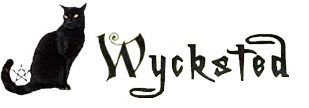SUMMER SOLSTICE

Southern Hemisphere - Circa December 21st - 22nd
Midsummer - December 24th
Northern Hemisphere - Circa June 19th – 23rd
Midsummer - June 24th
As we leave the gateway of Summer, that was celebrated with Beltane, our journey brings us to the Summer Solstice, also known as Midsummer, Litha and Whitsuntide. This event marks the longest and usually hottest day of the year. Symbolically, the Goddess is heavily pregnant of the God who will be reborn at Yule. This act of fertility is shown within the Earth and the abundance of growth. Flowers, trees and herbs along the roadside and in gardens show off their brilliant hues and lush foliage. Even the smallest of buds can be seen with it´s rich colourings if one looks closely enough. Fruits and vegetables are also plentiful awaiting to be picked now and during the coming harvest months.
The sun has reached it´s peak upon this day marking the Sun God and his approaching fatherhood, also at the peak of his life. Ahead of us is a celebration of much feasting and honouring of the Sun and all the different Sun Gods that portray this great blazing orb. The pregnant Goddess is also worshipped along with many sun rituals, using ancient and traditional ceremonies from all corners of the world and all walks of life. Some customs may seem strange to us, while others will create stirrings within our souls of times long ago.
Our Summer Solstice in New Zealand falls around the ripe old time of December 21st – 22nd. Midsummer is usually the 24th of December. This time for us is celebrated with Pagan and Celtic celebrations while others celebrate their Christian Christmas festivities. Some families actually compromise and incorporate both into their family celebrations.

SOLSTICE BALEFIRES
As the Summer Solstice was a time of great heat with the sun´s strength being at it´s greatest, fires were lit in it´s honour. This was done to encourage the suns force and to transform it´s strength into those honouring it. Many believed that if the Gods of the Sun were kept happy, then this would ensure their return to the lands. Many rituals using fire magic were and still are preformed, these mainly took place during noon which is the symbolic time of Summer. Oak should always be burnt in the balefire as it is considered protective and fortunate for those who burn it.
The Midsummer fire was also considered a good time to burn any old protective charms that had been made earlier. Certain herbs were also traditionally thrown into the fire during this time, among them were, apple, thyme, mugwort, and plantain. These herbs were said to be some of the most potent, healing and magical herbs of the day. Many herbalists and old wise women swore by them, with uses from potions to seeing fairies during Midsummer, and to heal a sore belly. By throwing certain herbs into the fire, one was said to burn away the disease of the afflicted patient. Many cultures and covens still practice this form of healing today and in many parts of Europe you can see the hilltops are ablaze with many a balefire upon the hottest day of the witches year. A gesture of lighting several candles in the colours of the sun at midday is also an effective if simple way of honouring the sun. At Imbolc we lit candles to encourage the suns return, here we light candles and fires to encourage it´s strength.
SOLAR WHEELS
As this festival marks the glory and strength of the sun, solar wheels and discs play an important part in any craft work taking place. The outer circle represented the sun and the magic circle while the equal armed cross inside that was sometimes attached, signified strength and union of those that come together. These wheels are decorated with herbs of the season, sun symbols and charm sachets.
SUMMER SOLSTICE CORRESPONDENTS
Activities - Activities can include any Midsummer magic and spell casting, balefire jumping, candle and herb magick, divination, gathering herbs and plants, healing work, honouring the Fae, making sun wheels, ocean magick, outdoor celebrations, dancing, feasting, swimming, trips to the beach, watching the sun rise, at midday and then set, water blessings, weeding gardens.
Associated Names - The names for the Summer Solstice and Midsummer are usually inter-connected. Alban Heruin (light on the shore) Coamhain, First Day of Summer, Gathering Day, Heiros Gamos, Herb Night, Litha, Longest Day, Midsummer, Midsummers Eve, Mean Samhraidh, Whitsuntide, Shortest Night, Sun Blessing Day.
Colours - Gold, red, green, blue, bright colours.
Deities - All pregnant and young Mother Goddesses, Sun Goddesses, All Sun Gods, Thunder and War Gods.
Herbs and Plants - All mints, basil, bay, calendula, chili, ferns, frankincense, ginger, lavender lemon, mistletoe, nettle, oranges, pohutukawa, saffron, sandalwood, St Johns wort, summer savory, sunflowers, vervain.
Foods - Flaming foods, barbeques, outdoor cooking, oranges, lemons, carrots, salads, citrus and herbal dishes, chicken, kiwifruit, fish, chilled foods, fruit salads, ices, chilies, spiced foods.
The Moon - Mead Moon.
Symbols - All sun creatures, candles, daisies, discs, dragons, Fae, fire, glass balls and orbs, gold, hawks, holy stones, iron, lamps, lions, phallic symbols, salamanders, solar crosses and wheels, spirals, stars, stone circles, sunflowers, sun signs, the eight spoked wheel, the phoenix and the number 8.

